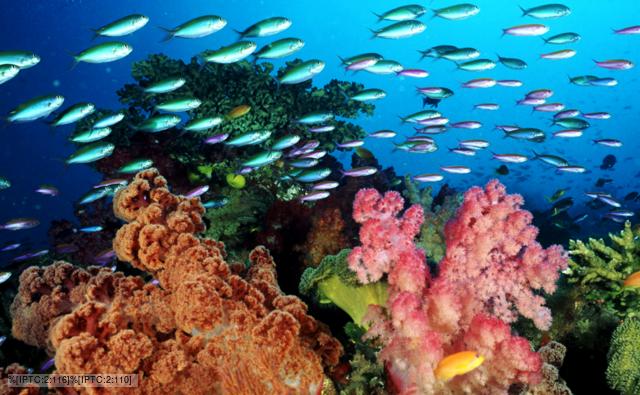The idea behind ecosystem services is to give environments such as rainforests and savannahs a monetary value: a green bond. It has sprung up from the mantra of "you can't manage what you can't measure". Therefore if a cost can be assigned to the benefits of a site of land, investors may want to purchase it, protect it, and sell it on in the future.
But what actually would you be buying??
 |
| Worth $1.2million to you? |
For an example let us look at the most valuable ecosystem in the world; coral reefs. The Economics of Ecosystems and Biodiversity (TEEB) have valued them at up to $1.2 million per hectare per year! This astronomical value is based mainly on the tourism opportunities that come with them.
Or if that is slightly out of your price range why not a hectare of mangroves; a steal at only $18,000 per year. In this case you are affectively buying coastal defences. Historically these areas have been used as shrimp farms, but the revenue bought in by them doesn't match the ecosystems services value. It is therefore better and more profitable to keep them in their natural state.
| Mangroves: an important sea defence |
A company founded by a University of Oxford zoologist and a banker, Canopy Capital, have so far paid half a million pounds for the right to market these services. Their aims can be accessed on their website, and they wish to not only protect our natural resources at the sites, but also the indigenous peoples that with within them. A win-win situation if you like. For example, keeping the mangroves means helping the natural environment and protecting locals from threats such as flooding from storm surges.
From a climate change perspective the biggest draw of these plans would be the carbon storage potential. For this forests are the obvious choice; having carbon stored in trees is far better than having it sitting in the atmosphere. If power companies for example (as Pearce uses) are forced by the government to salvage some of their carbon emissions is may cost them $30 per tonne of carbon to do so on site. However, if the equivalent carbon offset from ecosystem services cost $20 per tonne the plant would obviously take this option instead.
 |
| Hoovering up our carbon overspill? |
So the concept is a fairly simple one: buy and preserve a slice of our natural Earth and hopefully make some money out of it yourself. I wish the project luck, but as of 2007 Canopy Capital are yet to make a sale. Keep your eyes peeled though, it could happen one day soon!
Interesting concept - does this mean particular ecosystem areas bought by investors are protected from destruction, or that those investors may do with it what they will? This might not be a good thing.
ReplyDeleteI have also thought about the monetary values of nature-aspects; I posted on a recent paper which assessed the literal financial costs needed to preserve species diversity (and reach targets) and certain areas (just out of interest!).
Thanks, I shall have a read of your paper review! For ecosystem services it means they protect the areas, because the monetary value is assigned not to the land but their ability to carry out functions such as store CO2, reduce run off, contain high species diversity etc. So if you had an area of rainforest and then cut all the trees down you would lose all value assigned to the land! It is a tricky one though, because the value would always have to be higher than the amount of money logging the area would bring you in for the scheme to work.
ReplyDelete